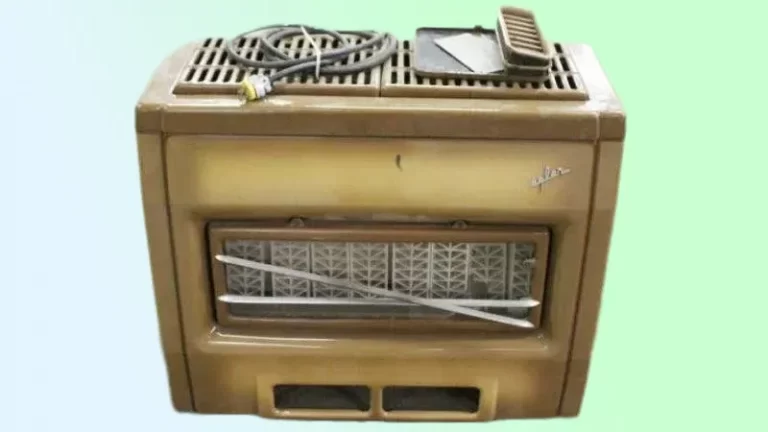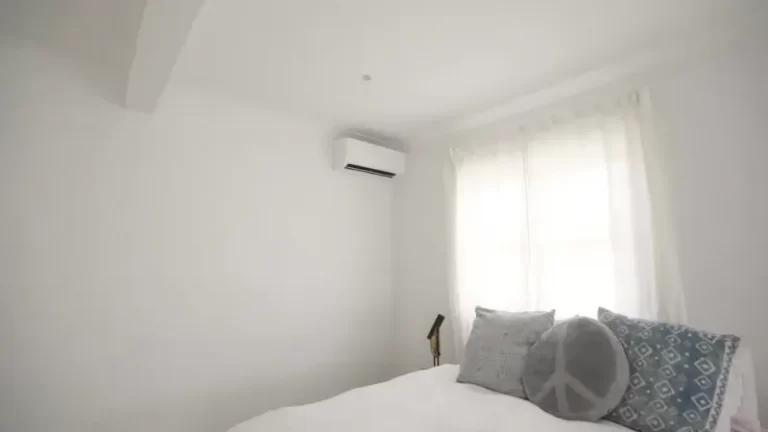Samsung Refrigerator Problems and Solutions
Samsung refrigerators are known for their advanced features, stylish design, and exceptional performance. However, like any other appliance, they can also experience problems over time. Some of the most common issues include clogged defrost drain, uneven temperatures, refrigerator not making ice, leaking water, and not cooling.
The purpose of this blog is to provide homeowners with a comprehensive guide on how to fix these problems and keep their Samsung refrigerators running smoothly. Whether you need troubleshooting tips or information on scheduling a service appointment, this blog will have you covered.
Has Samsung Fix Refrigerator Problems?
Samsung has a dedicated support system in place to address any problems with its refrigerators. If a homeowner is facing any issues, such as the refrigerator not making ice, not defrosting, leaking water, or not cooling, they can refer to online resources for troubleshooting tips or contact Samsung directly for service assistance.
Samsung has a large network of technicians who can diagnose and fix the problems with the refrigerators. Additionally, Samsung offers owner’s manuals, firmware, and software updates to help resolve any issues.
If a repair is needed, Samsung can assist with scheduling a service appointment or provide a status update on a current repair request.
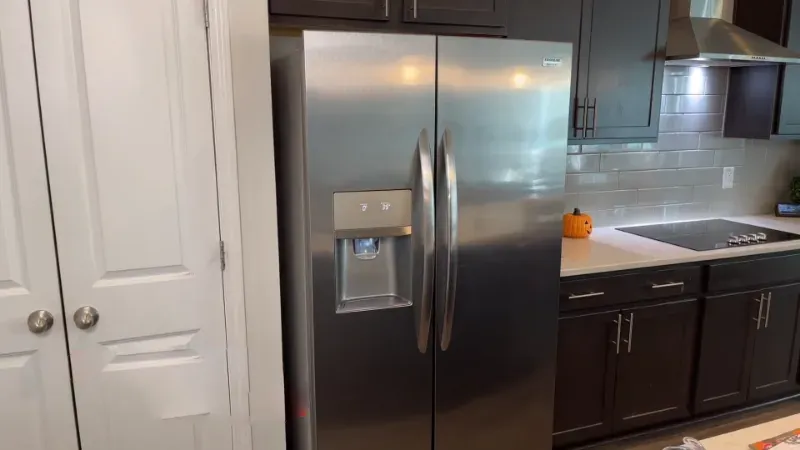
Problem 1: Clogged Defrost Drain
A clogged defrost drain in a Samsung refrigerator can cause water to accumulate and eventually leak. The defrost drain is responsible for directing the excess water from the defrost cycle to the drain pan located at the bottom of the refrigerator.
When the drain becomes clogged with debris, ice, or food, the water will back up and leak from the fridge.
Symptoms of a Clogged Defrost Drain
The signs of a clogged defrost drain in a Samsung refrigerator include water pooling at the bottom of the fridge, water or ice buildup in the freezer, an unpleasant odor, and food going bad more quickly. If you notice any of these symptoms, it’s important to address the problem right away to prevent further damage.
How to Fix the Problem
The good news is that fixing a clogged defrost drain in a Samsung refrigerator is a relatively straightforward process. You can start by pouring hot water down the drain to melt any ice or debris blocking it.
If this doesn’t work, you can use a defrost drain cleaning tool to remove the blockage. You can also try using a hair dryer or steam mop to melt the ice and free up the drain.
Bosch 800 Series Refrigerator Problems and Solutions
Importance of Fixing the Problem
Fixing a clogged defrost drain is essential for maintaining the performance of your Samsung refrigerator. If the problem is not addressed, the water will continue to leak and cause damage to the interior of the fridge.
This can also lead to food spoilage, which can be costly and a waste of food. Additionally, a clogged defrost drain can cause the refrigerant coils to freeze and prevent the refrigerator from cooling properly.
By fixing the problem as soon as you notice it, you can prevent these issues and keep your Samsung refrigerator running smoothly.
a clogged defrost drain in a Samsung refrigerator can cause several problems, but the good news is that it can be easily fixed. By following the steps outlined above, you can prevent water damage, food spoilage, and ensure your fridge is cooling properly.

Problem 2: Uneven Temperatures
Samsung refrigerators are designed to keep your food fresh and at the right temperature. However, when the temperatures in the fridge or freezer become uneven, it can lead to food spoilage, waste, and reduced efficiency. This can occur due to a variety of factors, including a malfunctioning thermostat, dirty or clogged air vents, or issues with the temperature control system.
Symptoms of Uneven Temperatures
Some of the symptoms of uneven temperatures in a Samsung refrigerator include food that is not being kept at the correct temperature, condensation forming in certain areas of the fridge, and food that goes bad more quickly than it should. In some cases, you may also notice that the refrigerator is running continuously, which can be a sign that the temperature control system is not functioning properly.
How to Fix the Problem
To fix uneven temperatures in a Samsung refrigerator, you should first check the thermostat and make sure that it is set to the right temperature. You should also clean the air vents to remove any debris that may be blocking the flow of air.
If these steps don’t resolve the issue, you may need to replace the temperature control system or the thermostat. In some cases, it may be necessary to have a professional technician diagnose and repair the problem.
Importance of Fixing the Problem
Maintaining even temperatures in your Samsung refrigerator is important for several reasons. Firstly, it ensures that your food stays fresh and safe to eat. Secondly, it helps to reduce energy waste, as the refrigerator will not have to run as often to maintain the correct temperature.
Finally, it helps to extend the life of your refrigerator, as the continuous operation that can occur with uneven temperatures can put a strain on the system and cause it to wear out more quickly. By fixing uneven temperatures, you can enjoy the full benefits of your Samsung refrigerator and avoid costly repairs and food waste.
Problem 3: Refrigerator Not Making Ice
One of the common problems faced by Samsung refrigerator owners is uneven temperatures. This issue arises when the temperature in the fridge or freezer is not uniform throughout the compartment. This can result in food getting spoiled quickly or even getting freezer burns.
Symptoms of Uneven Temperatures
The signs of uneven temperatures in a Samsung refrigerator include food getting spoiled quickly, ice cream getting melted and then refrozen, or freezer burned food. If you notice any of these symptoms, it is highly likely that you have an issue with uneven temperatures in your refrigerator.
How to Fix the Problem
The first step in fixing the problem of uneven temperatures is to identify the cause. This can be done by checking the placement of food items inside the refrigerator. If the placement of food items is causing an obstacle to the air flow, rearrange the items to ensure that air can circulate properly.
Additionally, you can check the door seals and make sure they are airtight. If the problem persists, you can try adjusting the temperature settings or consult a professional for further assistance.
Importance of Fixing the Problem
Fixing the issue of uneven temperatures in a Samsung refrigerator is important to ensure that food stays fresh and safe for consumption. Uneven temperatures can cause food to spoil quickly, leading to waste and potentially even health issues if the food is consumed. In addition, fixing the issue can also help to prolong the life of the refrigerator, as the constant fluctuation of temperatures can wear down the unit over time.
Problem 4: Leaking Water
Leaking water is a common issue that many Samsung refrigerator owners face. Water leaks can come from various sources in the refrigerator such as the door, the back of the unit, or the base.
If the water is not collected and disposed of in a timely manner, it can cause damage to the floor and other components.
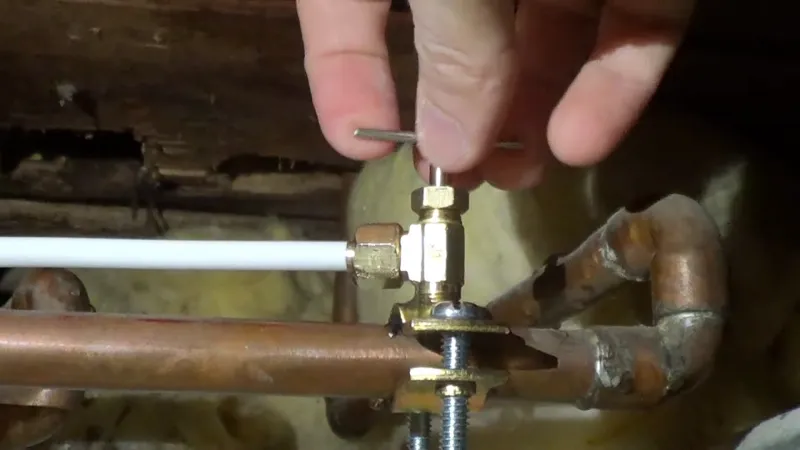
Symptoms of a Leaking Refrigerator
There are several signs that indicate a leaking refrigerator, including puddles of water around the base of the unit, water stains on the floor or nearby walls, and a musty odor.
How to Fix the Problem
Here are some steps to help you fix a leaking Samsung refrigerator:
- Check the door seal: If the water is coming from the door, it is likely that the door seal is damaged or worn out. Clean the door seal and make sure it is properly aligned. If it is worn out, replace it.
- Check the drain: If the water is coming from the back of the unit, it is likely that the drain is clogged. Clear any debris or ice from the drain and make sure it is not blocked.
- Check the base: If the water is coming from the base of the unit, it could be due to a clogged defrost drain or a problem with the defrost system.
Importance of Fixing the Problem
It is important to fix a leaking refrigerator as soon as possible to prevent damage to your floor or other components. Additionally, a leaking refrigerator can create a damp and musty environment, which is conducive to mold and bacteria growth. This can pose health risks and affect the quality of your food and beverages stored in the refrigerator.
Problem 5: Refrigerator Not Cooling
One of the most common problems faced by Samsung refrigerator owners is the refrigerator not cooling. This can be due to a variety of reasons, including a malfunctioning compressor, an issue with the thermostat, a clogged condenser coil, or a problem with the fans.
Symptoms of a Refrigerator Not Cooling
The most obvious symptom of a refrigerator not cooling is the temperature inside the unit being higher than the set temperature. This can cause food to spoil more quickly and can also be a sign of a larger problem with the unit. Other symptoms include the fridge running continuously, excessive condensation, and warm air being expelled from the unit.
How to Fix the Problem
Fixing a refrigerator not cooling requires proper diagnosis of the issue. The first step is to unplug the unit and check the condenser coils for any blockages. If the coils are dirty, clean them with a soft brush.
Next, check the thermostat to make sure it is functioning correctly and set to the correct temperature. If the problem persists, the compressor or fans may need to be replaced.
Importance of Fixing the Problem
Fixing a refrigerator not cooling is crucial for maintaining the quality and safety of the food stored inside. A refrigerator not cooling can cause food to spoil more quickly, leading to food waste and a potential health hazard.
Additionally, a malfunctioning unit can lead to increased energy consumption and higher electricity bills. To ensure the longevity of your Samsung refrigerator and the safety of your food, it’s essential to address any cooling problems as soon as they arise.
Problem 6: Loud Fan Noise
One of the most common problems associated with Samsung refrigerators is loud fan noise. This can occur when the motors are overloaded or the fan blades are not properly aligned.
Symptoms of a Loud Fan
The sound of a loud fan can vary depending on the location of the unit, but common symptoms include squealing, screeching, or whining. Some consumers also report hearing a squeal or rumble while the refrigerator is in motion.
How to Fix the Problem
The fix for loud fan noise can vary depending on the nature of the problem, so the first step is to identify the cause. Here are some steps to help you fix the noise:
- Check the temperature: If the noise is coming from the condenser fan, check the temperature of the freezer and make sure it is below 40 degrees Fahrenheit. If the noise is coming from the fan in the refrigerator, check the temperature and make sure the temperature is at least 40 degrees Fahrenheit.
- Clean the blades: If the noise is coming from the fan in the refrigerator, check the fan blades to ensure they are properly aligned. Make sure the top and bottom of the blades are not touching and that no obstructions are blocking the airflow.
- Check the motors: If the noise is coming from the fan in the refrigerator, make sure the fan is not in the overload position and is operating at normal speed. If the fan blades are not in proper alignment, the motor may need to be replaced.
Importance of Fixing the Problem
Fixing a refrigerator that is making a loud fan noise is crucial for preserving food and ensuring the safety of your family. Any fan noises, regardless of the location of the unit, can be a sign of a more serious problem with the refrigerator and should be dealt with as soon as possible.
Additionally, excessive fan noise can have an impact on the environment. When the motor is overloaded or working at maximum speed, the refrigerator will use more electricity and will produce more noise.
Problem 7: Expanding Shelves
Even the most durable Samsung refrigerators will eventually show signs of wear over time. In particular, older Samsung units often show signs of structural damage, such as the expansion of the storage space. This is likely caused by excessive use or a lack of maintenance, as improper placement of food and debris can put a strain on the parts of the refrigerator.
Symptoms of Expanding Shelves
Symptoms of expanding shelves include warped or cracked plastic parts and the expansion of the space between shelves. If you notice any of these signs, stop using the unit immediately and remove the shelves to prevent further damage.
How to Fix the Problem
Fixing expanding shelves is crucial to prevent further damage and preserve the long-term durability of your refrigerator. In most cases, this can be done by re-applying the polyurethane sealant or the rubber seal between the outer door and the inner wall of the refrigerator. If that fails, consult a repairman to help fix the problem.
Importance of Fixing the Problem
Fixing the issue of expanding shelves is crucial for maintaining the long-term longevity and overall quality of your Samsung refrigerator.
Samsung refrigerator owners should be aware of the potential signs of damage that occur over time, so they can take preventative measures when they notice any signs of expansion.
What Causes Uneven Voltage in Breaker Boxes?
Problem 8: Squealing or Rumbling Noise
Squealing or rumbling sounds are one of the most common problems that arise with refrigerators. This can happen when the water or ice levels are too high or when the cooling system is malfunctioning.
Symptoms of a Squealing or Rumbling Noise
The most common symptom of a squealing or rumbling noise is the noise coming from inside the fridge. If it’s the refrigerator’s exterior that is making the noise, the outside of the unit may be shaking. Other signs include the cooling unit making a hissing or squealing sound, as well as the unit making a rattling noise.
How to Fix the Problem
Some of the most common issues that can cause the refrigerator to make a noise are a lack of water or a blocked water dispenser. In the case of water issues, clearing a clog may be all that is necessary to get the refrigerator back in working order.
Another possible cause of a squealing or rumbling noise is a malfunctioning compressor. If the refrigerator’s compressor is not operating properly, the fan and condenser may not be able to properly circulate cool air.
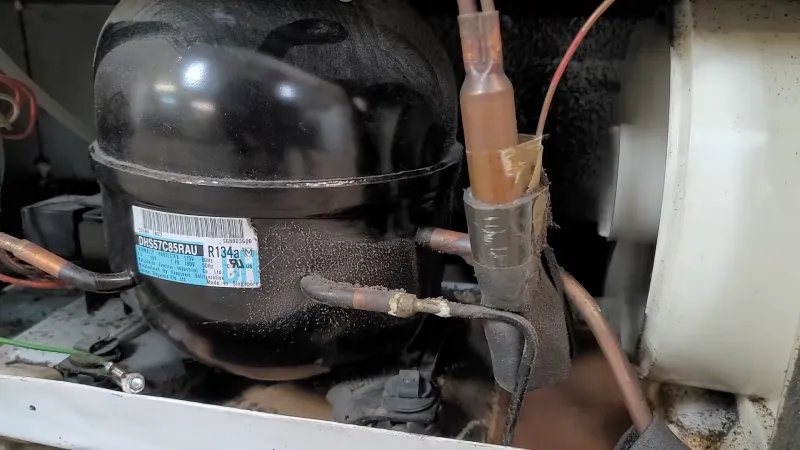
Importance of Fixing the Problem
Fixing a squealing or rumbling noise is a crucial step in getting your Samsung refrigerator back in working order. If the issue is not addressed, it can cause damage to the refrigerator and the contents of the fridge.
Not all squealing noises are necessarily a sign of a problem, as they can be normal and harmless. But if you experience a squealing noise from your refrigerator, it is crucial to address the issue as soon as possible to prevent further damage and preserve the longevity of the unit.
Contacting Samsung Support
Samsung is known for producing high-quality appliances and providing excellent customer support. The company offers several options for resolving issues with its refrigerators, including service appointments, repair status checks, and customer support. Here is a detailed explanation of Samsung support options and how to take advantage of them.
Overview of Samsung Support Options
Samsung provides various support options for its customers, including in-person service appointments, phone support, and online resources. The company’s website also offers a comprehensive support center that provides troubleshooting guides, FAQs, and product manuals. Customers can also contact Samsung through email, chat, and social media.
How to Schedule a Service Appointment
To schedule a service appointment with Samsung, customers can visit the company’s website and select “Service Request.” From there, customers can enter their location, product information, and the nature of the issue they are experiencing. Samsung will then provide a list of available service providers in the customer’s area. Customers can choose the provider that best suits their needs and schedule a service appointment.
How to Check Repair Status
Customers can check the status of their repair by visiting the Samsung website and selecting “Check Repair Status.” They will need to enter their name, phone number, and product information to view the status of their repair. Samsung provides real-time updates on the status of the repair, so customers can stay informed throughout the process.
Importance of Reaching Out to Samsung Support
Reaching out to Samsung support is important for several reasons. First, it helps to ensure that the problem is resolved quickly and effectively. Samsung’s technicians are well-trained and experienced, and they can diagnose and repair problems with Samsung refrigerators with ease.
Second, contacting Samsung support can help to extend the life of the appliance. Regular maintenance and repairs can prevent small issues from becoming bigger, more expensive problems. Finally, reaching out to Samsung support can provide peace of mind.
Customers can be assured that their appliance is in good hands, and that the issue will be resolved as quickly and efficiently as possible.
Samsung provides several options for resolving problems with its refrigerators, including service appointments, repair status checks, and customer support. By taking advantage of these resources, customers can ensure that their appliance is functioning properly and that any issues are resolved quickly and efficiently.
Can Poop Come Back Up The Toilet
Conclusion
Samsung refrigerators are high-quality appliances that can last for many years with proper maintenance and care. However, like all appliances, they may experience problems from time to time.
Some of the most common problems include clogged defrost drains, uneven temperatures, refrigerators not making ice, leaking water, and refrigerators not cooling. By understanding the symptoms and causes of these problems, and knowing how to fix them, you can help extend the life of your Samsung refrigerator and prevent food spoilage and other issues.
If you are unable to fix the problem on your own, it’s important to reach out to Samsung support for assistance. Whether it’s scheduling a service appointment or checking the status of a repair, Samsung is here to help you get your refrigerator back in working order.
So if you’re experiencing any issues with your Samsung refrigerator, don’t hesitate to contact them today.

